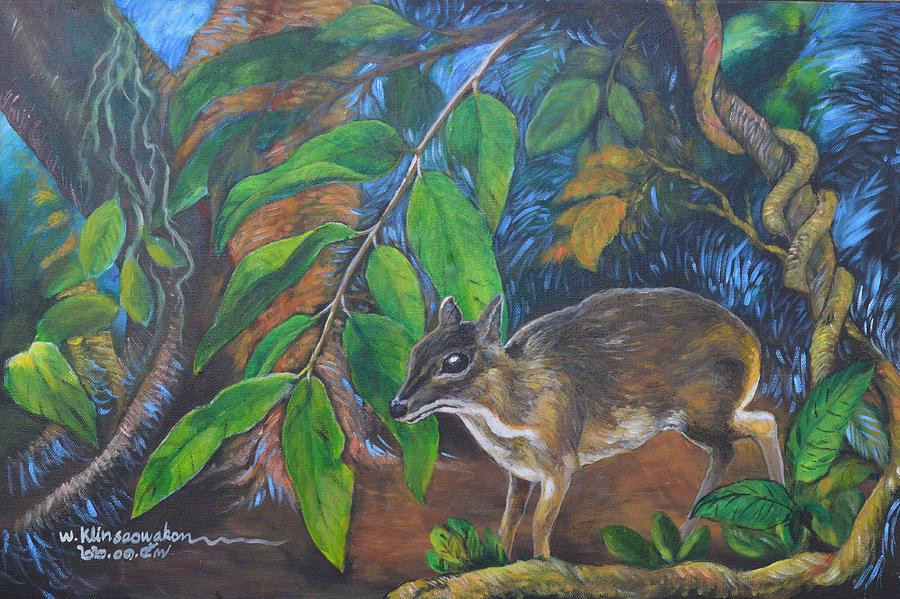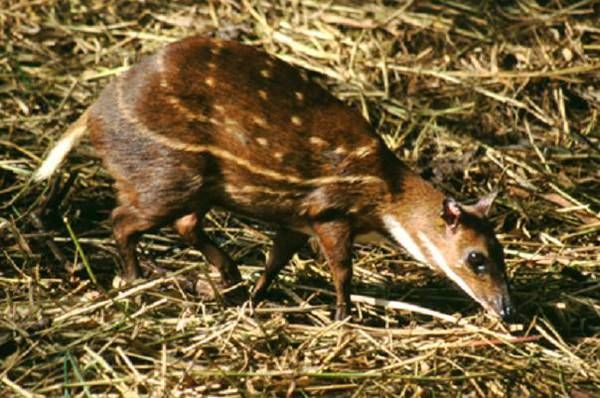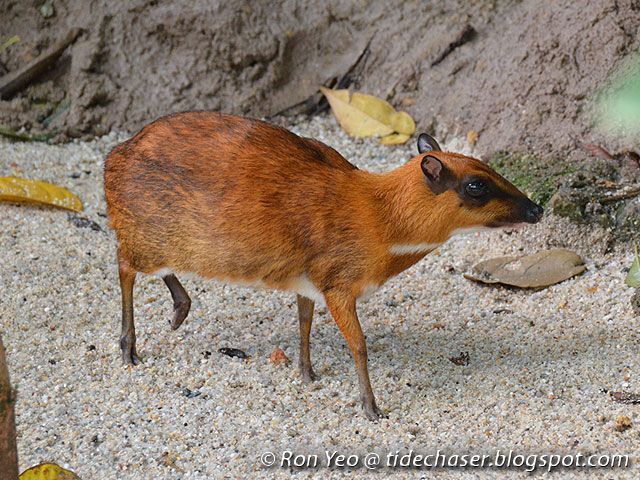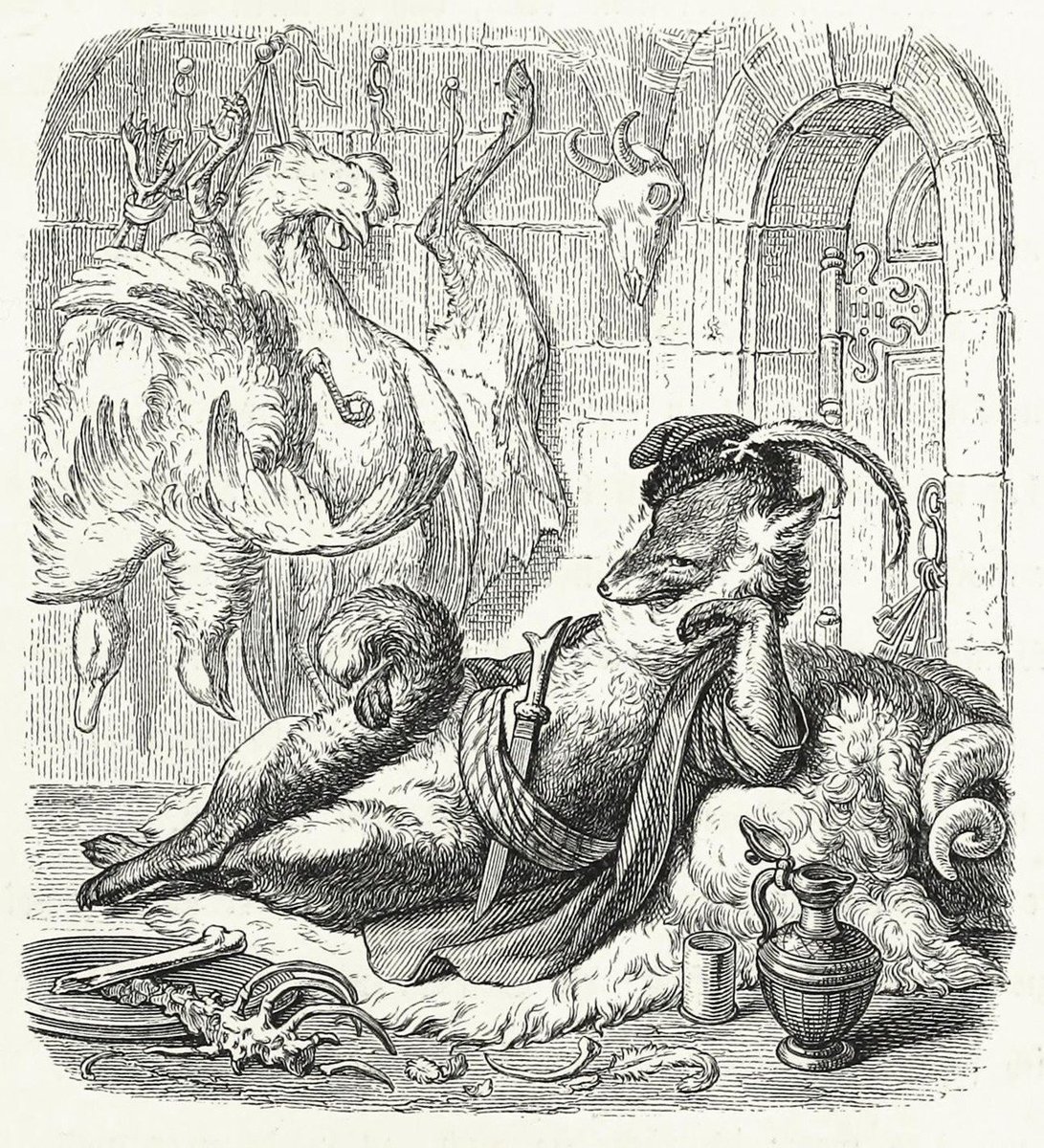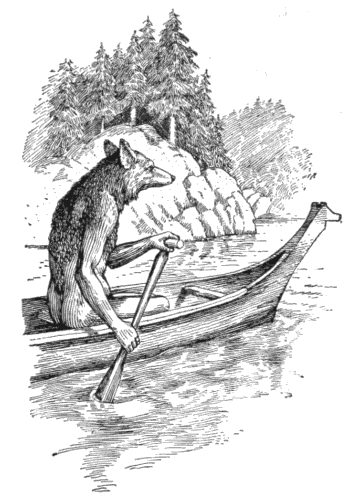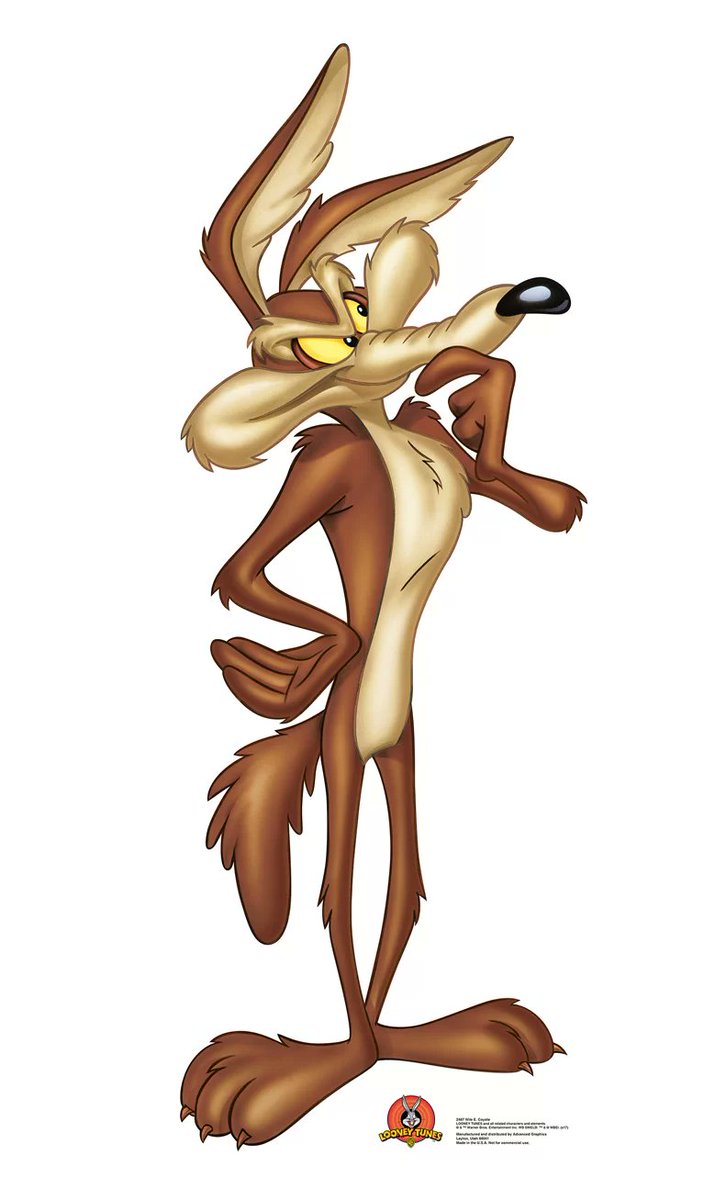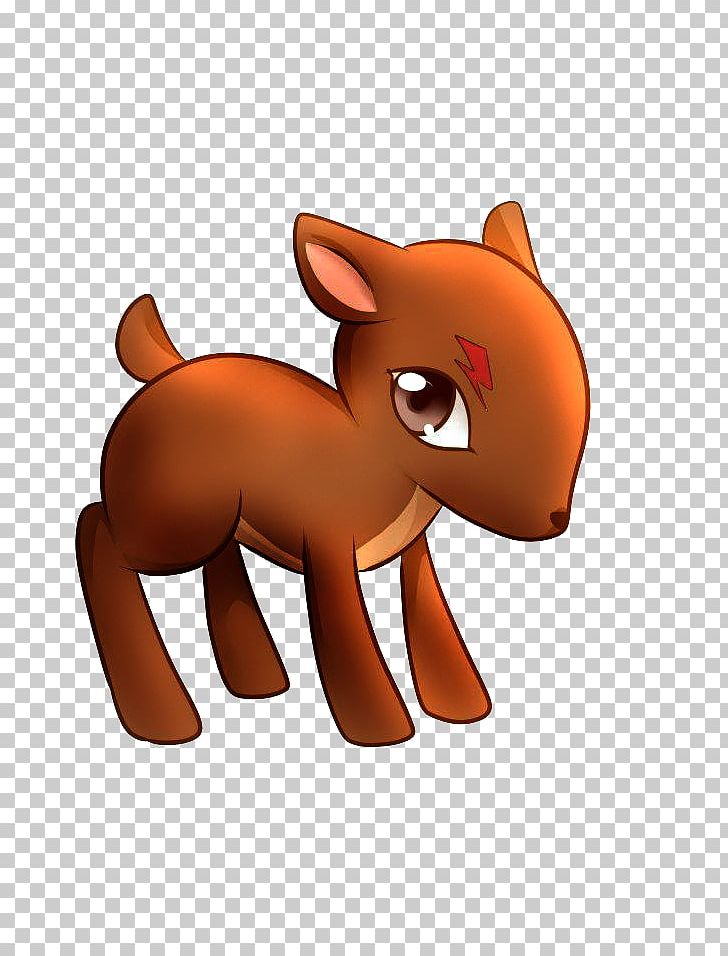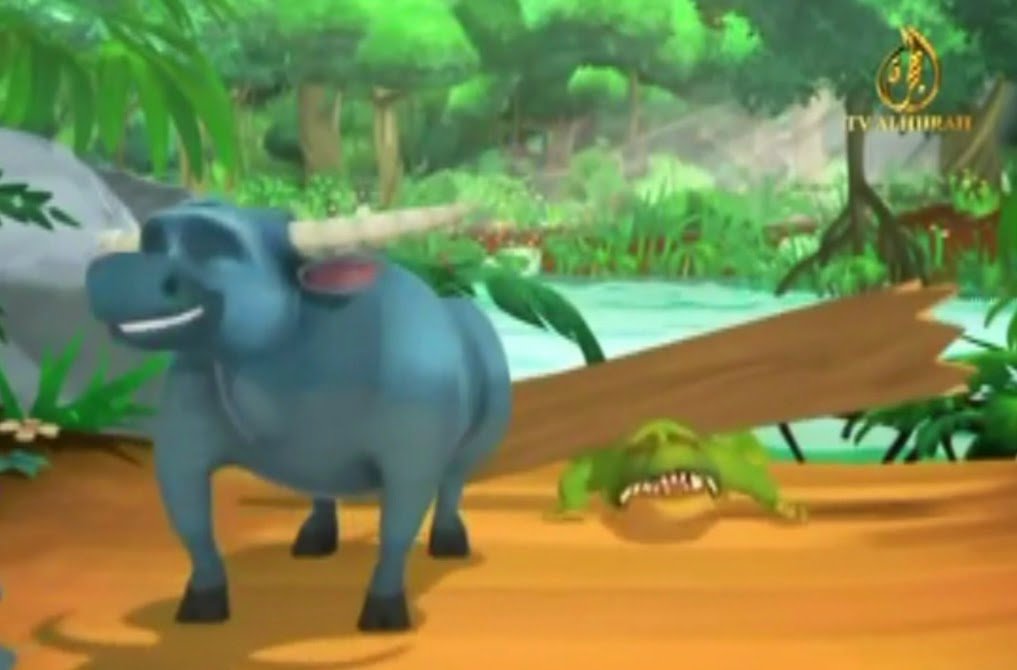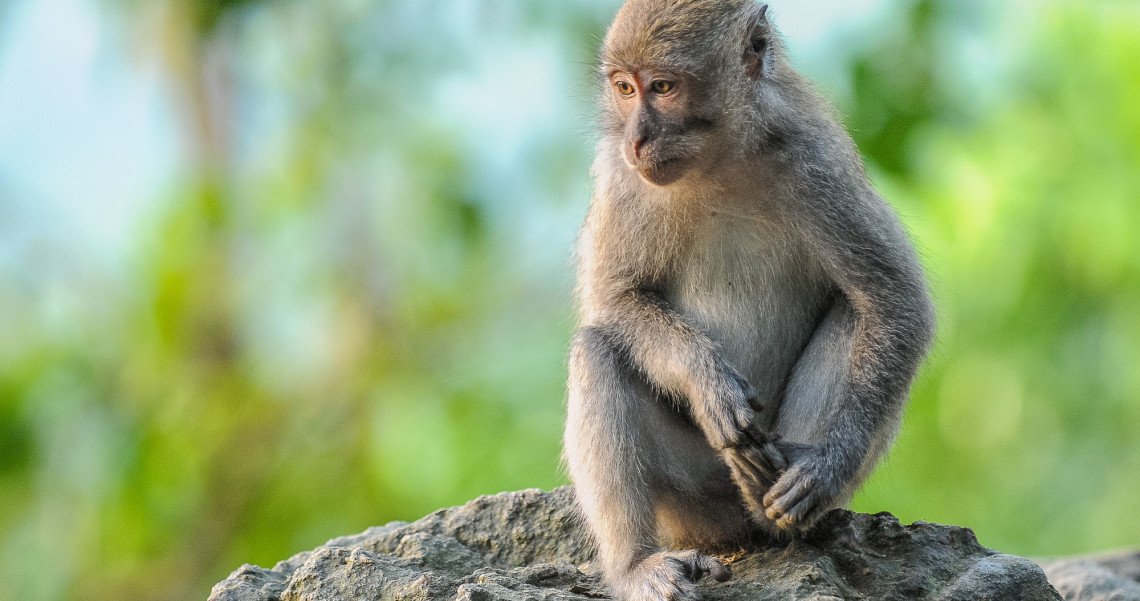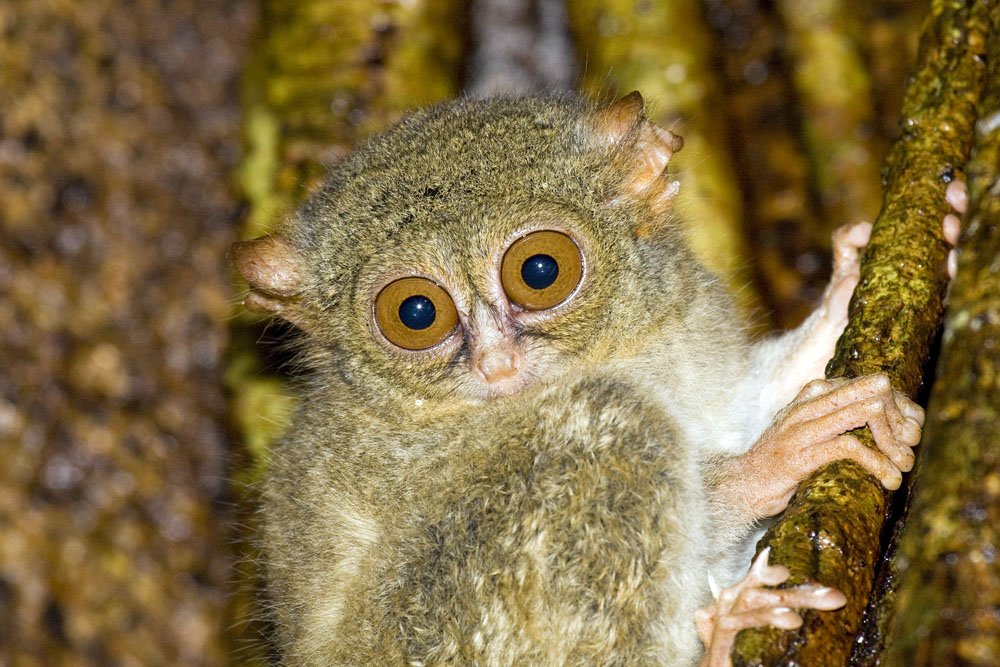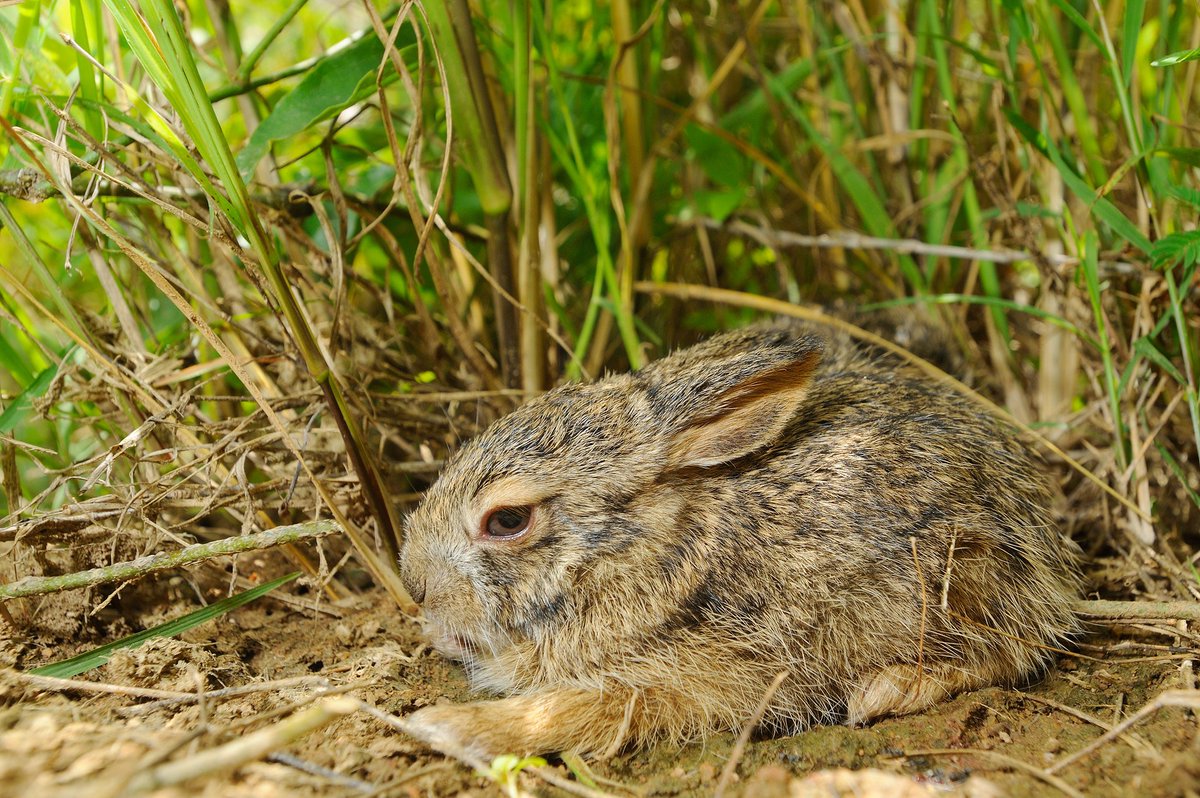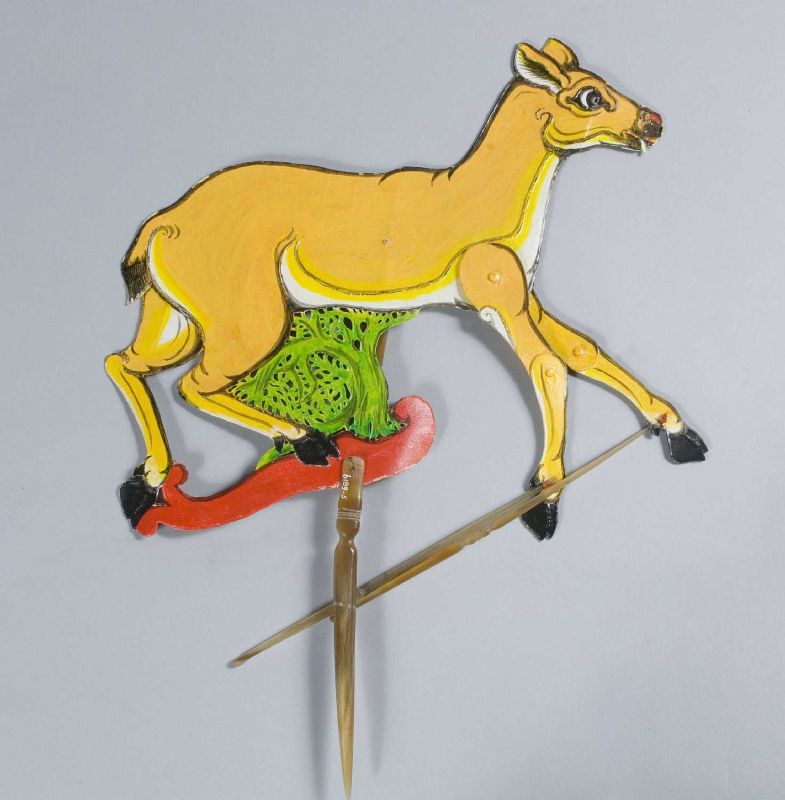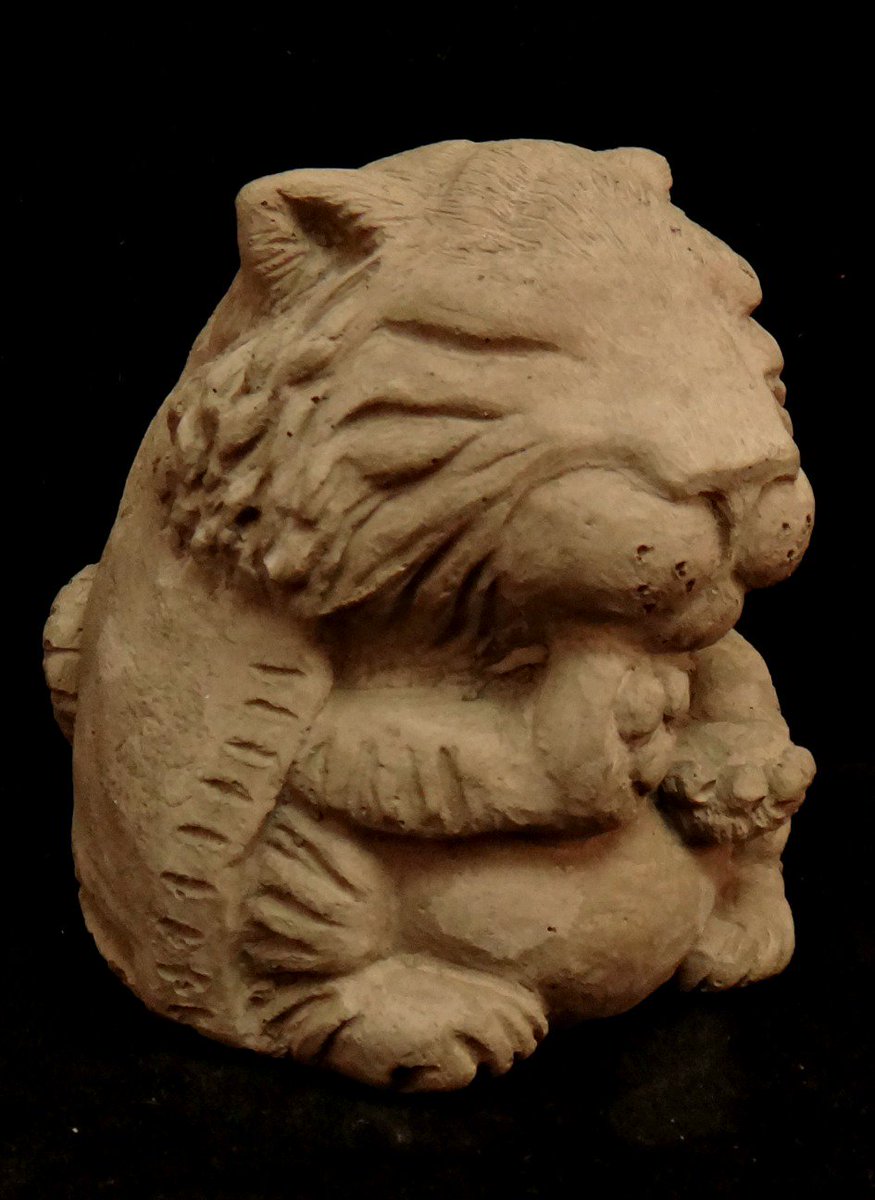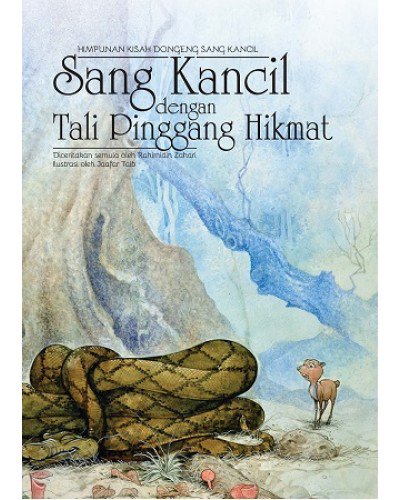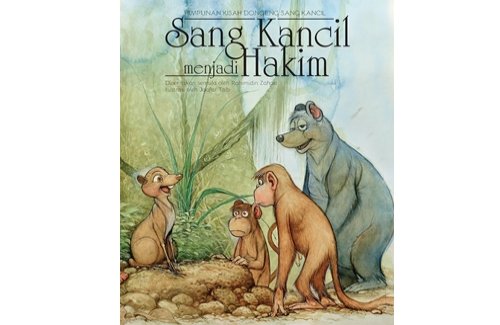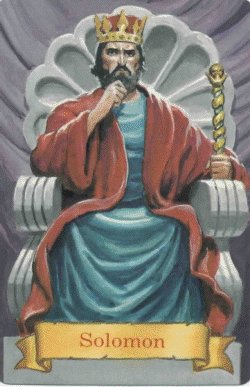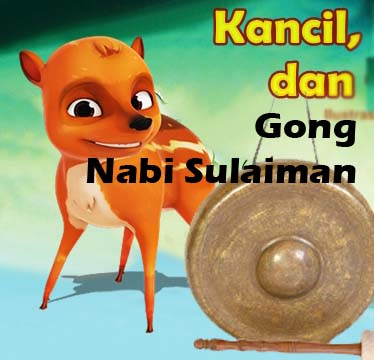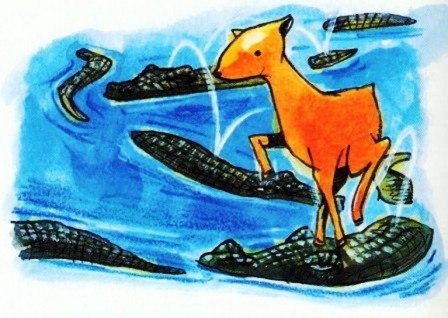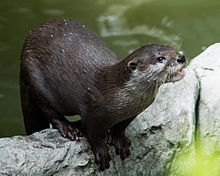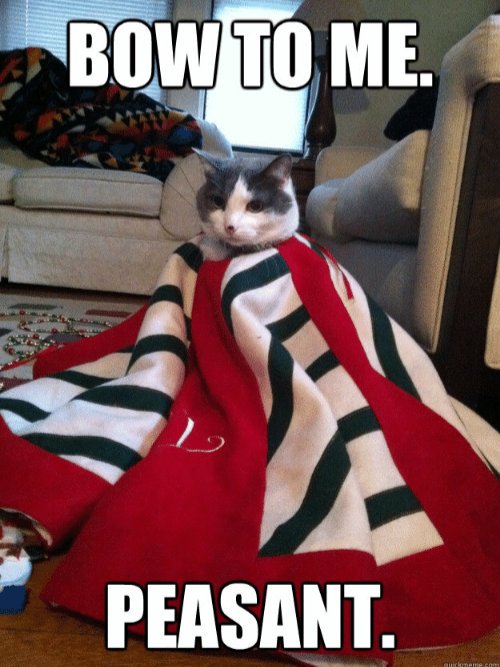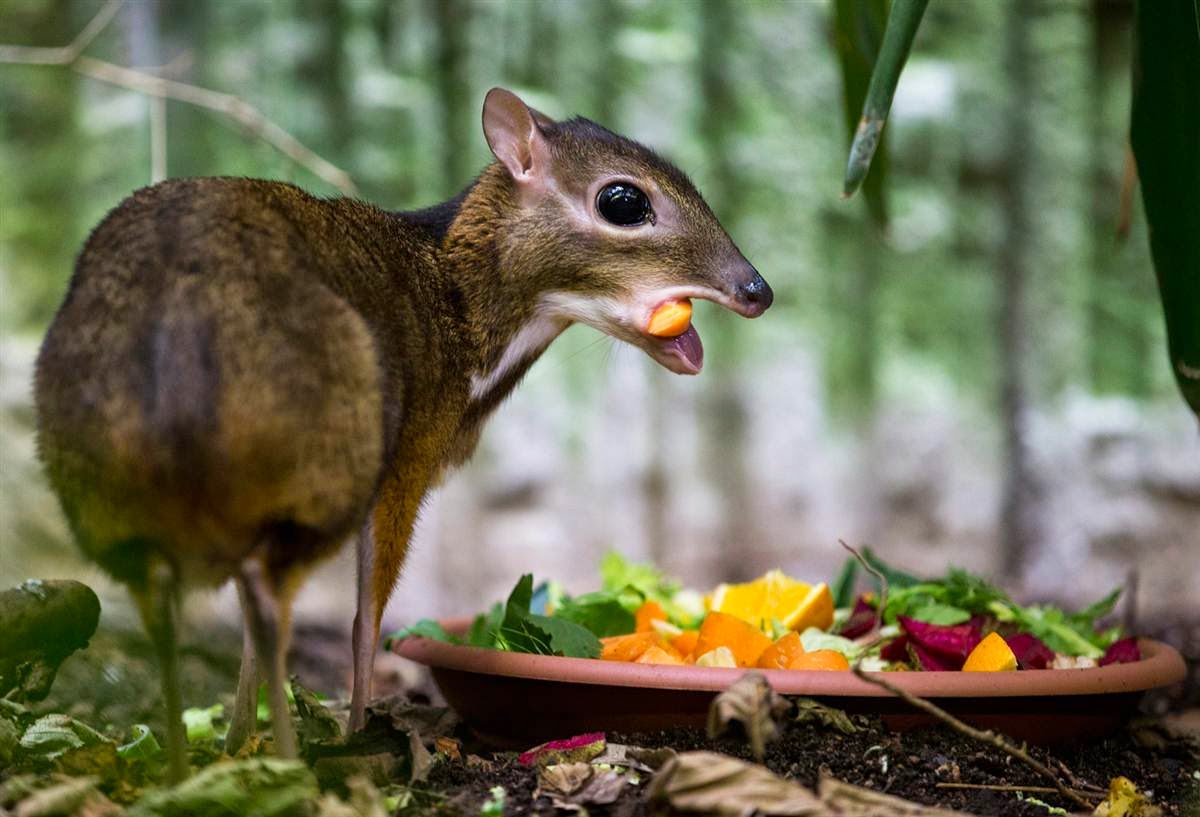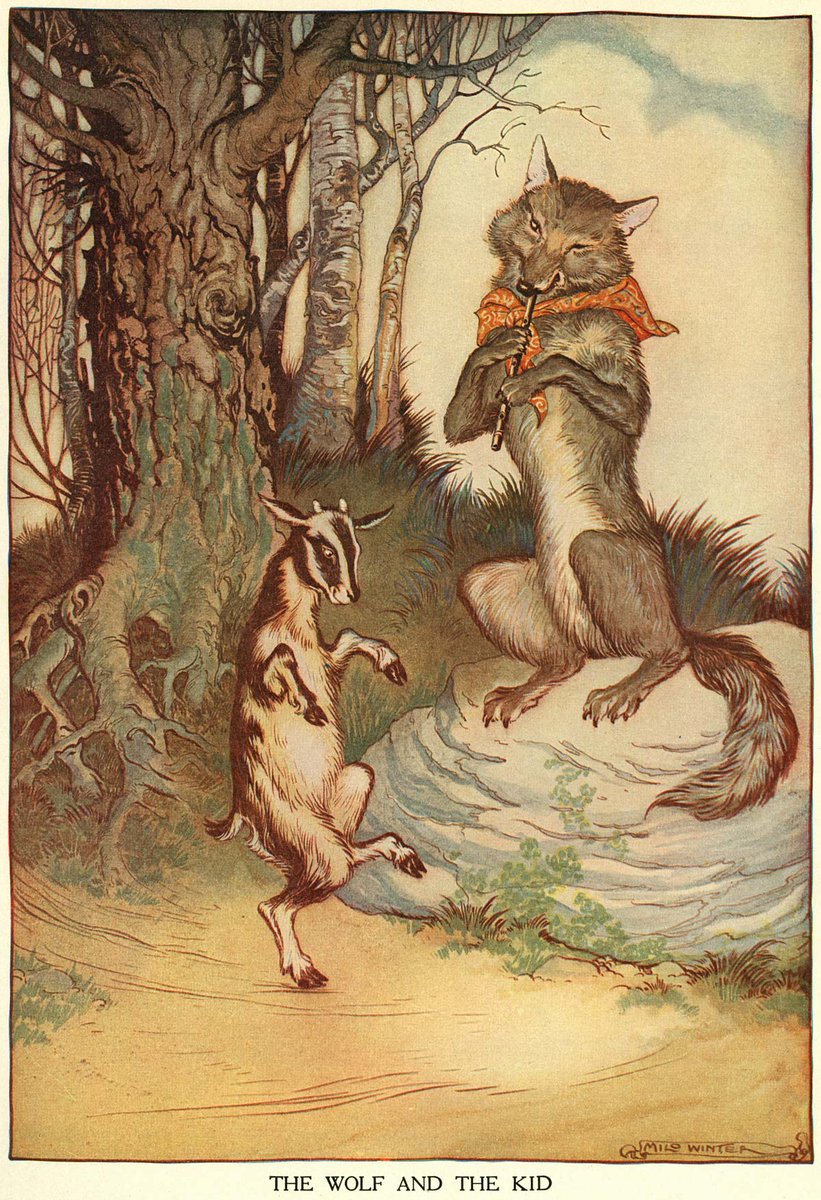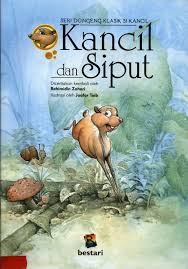I was requested to do a thread on Sang Kancil, the clever but annoying hero of Malay animal fables. I& #39;ll include some explanation of the lore along with a sampling of the stories themselves https://twitter.com/Oliver_JHoward/status/1101372631742205952?ref_src=twcamp%5Ecopy%7Ctwsrc%5Eandroid%7Ctwgr%5Ecopy%7Ctwcon%5E7090%7Ctwterm%5E3">https://twitter.com/Oliver_JH...
As always, I& #39;ll start with the etymology. & #39;Sang& #39; is an honorific prefixed to names of animals and respected figures (eg. Sang Sapurba). Occasionally it& #39;s used for certain types of deities (Sang Hyang Widi, Sang Suria)
Kancil is the Malay word for a mousedeer or chevrotain, the world& #39;s smallest hoofed animal. The two English terms are usually interchangeable for Asian species of mousedeer, though there is some distinction between them
Mousedeer are mostly found in South and Southeast Asia. The largest species, the water chevrotain, comes from Africa and is never called mousedeer. The word chevrotain itself is of French origin, apparently meaning little goat
But the mousedeer is primarily an Asian animal, found everywhere from Pakistan to southern China. The generic Malay word for mousedeer is pelanduk. The greater mousedeer is called napuh and measures 30cm. The kancil or lesser mousedeer measures only 20cm and weighs half as much
Being such a tiny creature in a forest full of danger means that the mousedeer of folklore relies on his wits to outsmart other animals. Some stories are morality tales but others are morally questionable
This is characteristic of the trickster archetype found worldwide. Comparisons can be made with trickster animals of other cultures, like the sly European fox or the clownish American coyote. But of course, none are quite the same as Sang Kancil
Kancil doesn& #39;t have the cunning of the fox, or the duplicitous nature of the coyote. He& #39;s mischievous but not necessarily villainous. One might say he likes to have fun, even at others& #39; expense. Yet at the same time, he helps those in need
In an example of the former, the animals have caught a good haul of fish, and decide that the bigger animals should get a larger share. Sounds fair. But Kancil refuses and tricks them so that he and the tortoise get all the fish
http://kumbercer.blogspot.com/2016/08/cerita-si-kancil-dan-kura-kura.html?m=1">https://kumbercer.blogspot.com/2016/08/c...
http://kumbercer.blogspot.com/2016/08/cerita-si-kancil-dan-kura-kura.html?m=1">https://kumbercer.blogspot.com/2016/08/c...
But his trickery isn& #39;t always used selfishly. In one story, a buffalo (kerbau) helps a crocodile (buaya) which has been trapped under a log. The ungrateful crocodile then tries to eat the buffalo https://m.youtube.com/watch?v=HJ5tzkjxs3Q">https://m.youtube.com/watch...
Kancil acts as mediator and asks them to demonstrate what happened. This ends with the crocodile once again trapped under the log. Versions of this story occur as far as China. Many of the kancil stories exist in other parts of Southeast Asia, often with some other small animal
While Malays, Minang and Javanese are familiar with the mousedeer, this role is played by the monkey (kera) in Sunda folklore, the tarsier (kera hantu) among the Toraja, and the Burmese hare in Cambodia & Vietnam
The kancil stories evidently predate Islam, but their current form does show Islamic influence. Javanese folklore tells that Sang Kancil& #39;s mother is Dewi Sungkawa, who herself is the daughter of a holyman (pandita)
The Serat Saloka Darma was written by Pangeran Arya Sasraningrat, son of the Paku Alam (minor Javanese royalty). Literally meaning "Book of Poems (shloka) on Morality (dharma)", this book preserves even more pre-Islamic kancil motifs
In the Serat Saloka Darma, the mousedeer loses in a race against the snail. This is the local version of the tortoise and the hare, probably based on the Indian story of the tortoise racing a garuda since it has the same plot https://twitter.com/uglyluhan/status/1183995401201840129?s=19">https://twitter.com/uglyluhan...
Following his loss, Sang Kancil eventually changes his ways and becomes king of the forest animals. He then hears that the tiger (harimau) and civet (musang) have become sages teaching the mystic arts (ilmu kebatinan)
The civet is exiled, and the tiger becomes Kancil& #39;s teacher and minister in the palace. Although the Serat Saloka Darma was only written in the 19th century, the plot appears to have a much earlier pre-Islamic origin, which the Pangeran would& #39;ve been familiar with
Kancil stories reflect a more Muslim setting after the conversion to Islam in both Malaya and Java. The Hikayat Sang Kancil gives a good idea of their chronology. It begins with his usual tales of mischief, which can get pretty cruel
After helping free the buffalo and trapping the crocodile, Sang Kancil eats some of the tiger& #39;s share of meat, and then almost gets the tiger killed by a snake. Both the tiger and crocodile swear revenge on kancil, one on land and the other in the water
That the two animals after kancil were a tiger and a crocodile is no accident. These were the two greatest threats of the animal kingdom. The famous story of Sang Kancil tricking the crocodiles so he can cross a river takes place after that https://twitter.com/uglyluhan/status/1183276294613553153?s=19">https://twitter.com/uglyluhan...
He kills the crocodile babies. He pretends to be a religious teacher and beats the tiger& #39;s cub. He gets a deer killed by leading it into a human village. He escapes the deer& #39;s vengeful children by tricking the animals into a well. Yes, Sang Kancil is a detestable brat
Sang Kancil eventually repents after losing to the snail, and becomes a wise arbiter of justice under King Solomon (Raja Sulaiman). The basic repentance plot and themes are the same as the Serat Saloka Darma, but with a more Muslim audience in mind
Solomon appears quite often in Malay-Muslim folklore, sometimes added into existing stories and other times serving as the representation of Islam. Farish Noor calls him "God& #39;s public relations officer"
The appearance of Solomon in Malay folktales is basically meant to personify Islam, without having God or the Prophet Muhammad himself showing up. This storytelling device was frequently used in the early days of Islam& #39;s introduction into Malay society
Malay kancil stories in their present form can be divided into three chronological arcs. Think of them as "seasons" if you like.
1. Kancil as a commoner
2. Kancil as Soloman& #39;s minister
3. Kancil as king of the jungle
1. Kancil as a commoner
2. Kancil as Soloman& #39;s minister
3. Kancil as king of the jungle
The first arc comprises most of Sang Kancil& #39;s tales of mischief that we& #39;re familiar with, both good and bad. These stories emphasise how he handles the dangers around him using his wits
In one example, Sang Kancil scares off a tiger by pretending that a porcupine quill is the whisker of their king. The tiger believes any animal with whiskers as long and sharp as that quill must be a huge beast, so he runs off
https://m.youtube.com/watch?v=EQ2m77QAdGg">https://m.youtube.com/watch...
https://m.youtube.com/watch?v=EQ2m77QAdGg">https://m.youtube.com/watch...
The second arc takes place after Sang Kancil realises his own arrogance and repents for his sins, by putting his brains to good use as a minister of Solomon. One of my favourites is the story of Kancil and the Otters (memerang)
In this story, Sang Kancil suddenly launches into a 12-step silat routine, and ends up accidentally trampling the otter children to death. Soloman investigates each cause one by one, and concludes that Kancil is innocent
https://www.worldcat.org/title/hikayat-pelandok-ia-itu-hikayat-sang-kanchil-cherita-pelandok-dengan-anak-memerang-hikayat-pelandok-jenaka/oclc/499991922">https://www.worldcat.org/title/hik...
https://www.worldcat.org/title/hikayat-pelandok-ia-itu-hikayat-sang-kanchil-cherita-pelandok-dengan-anak-memerang-hikayat-pelandok-jenaka/oclc/499991922">https://www.worldcat.org/title/hik...
This is a cause-and-effect story like Bangau Oh Bangau when it ends with the blame being placed on the crab. But a more interesting version is what R.O Winstedt called a "clock" story where the otter himself indirectly caused the death of his own children https://twitter.com/uglyluhan/status/1108637711701671937?s=19">https://twitter.com/uglyluhan...
The final arc takes place after Sang Kancil builds up his reputation by settling an issue between the tiger and goat. The other animals start paying tribute to him after he takes down a giant https://m.youtube.com/watch?v=PMXfaXBYyi4">https://m.youtube.com/watch...
You& #39;d think that the time he spent as Soloman& #39;s minister would& #39;ve taught the brat to be less sombong, but apparently not. In the Hikayat Pelanduk Jenaka, he has the monkey stung by bees and warns that a similar punishment will befall anyone else who doesn& #39;t submit to his rule
As with animal fables around the world, the creatures in kancil stories are meant to reflect human society. For example, several stories feature Sang Kancil eating meat or fish and even craving venison, despite the fact that real mousedeer eat plants almost exclusively
So maybe the bad side of Sang Kancil helps make him a three-dimensional character. A character that mirrors human failings, that& #39;s endured many retellings over the centuries even with the adoption of new beliefs and changing times

 Read on Twitter
Read on Twitter